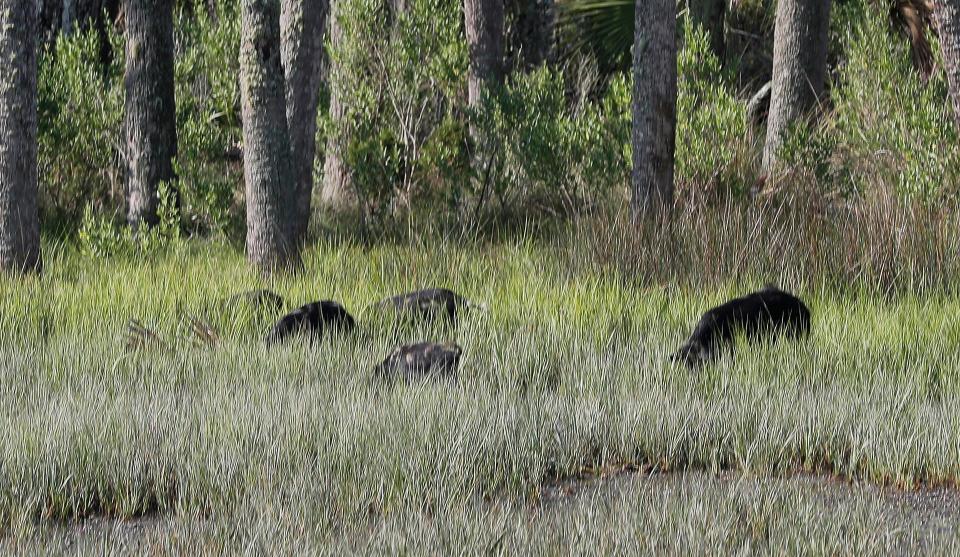Good for the environment or not, feral hogs are nothing to get wild about | Leggett

Here’s some news for any of you landowners or lease holders who might be worried about increasing numbers of feral hogs on your land.
According to a study done by a group of researchers at a Denmark university, large herbivores might actually be good for plant diversity and growth and not as bad for the land as we’ve always been told.
Frankly, I have a hard time believing that the holes I see dug in pastures and food plots by ravaging sounders of feral hogs can be explained by a bunch of Danish dudes way across the sea. Add in the fact that the researchers said they were focusing on mega fauna that only ate plants.
I haven’t seen any positive effects on acres of corn or wheat being destroyed by hogs, or highway rights of way getting plowed under by hogs as vehicles go rushing by.
And let’s not even get into the number of hogs we have now in Texas and the number of newborn fawns they root up and kill every spring. Their numbers have grown to the point that the Texas Legislature a few years back passed a bill allowing landowners and hunters to shoot hogs from a helicopter.
Is there any redeeming value in wild hogs?
I made one of those hunts myself, and we killed 250 hogs in a day and a half. That was only a fraction of the numbers that we saw.
I can still remember the first feral hog I ever saw in South Texas. It would have been about 1988 at Bill Carter’s Sombrerito Ranch just north of Laredo. Carter had declared war on the hogs and ordered us to kill any that we saw.
He never really got ahead of the growth in numbers, which we now know is almost exponential. Those hogs used the Rio Grande drainage to move up the river into the rest of South Texas and within a few years had shown up in Big Band National Park.
I would bet that no Texas county is without at least some breeding group of wild hogs. East Texas certainly has big numbers, thanks to abundant acorn crops and lots of water.
I grew up hunting on a large property along the Sabine River in Panola County where the landowner was actually trying to encourage a spike in hog numbers. He bought whole and partial cattle carcasses that he would drive around and dump on the ranch so that he could attract hogs to the area.
The hogs actually ate the entire body of a buck I had killed before we were able to retrieve it. There was nothing left but the head and horns and a couple of hooves. The rest left inside a wild hog.
A change in thinking? No, thanks
Maybe I’m wrong and grabbing onto any old beliefs that landowners have, but I can see no positive effects of wild hogs on Texas land. I will continue to shoot every single one I have an opportunity to punch a hole in, and I’ll feel good about it.
And then there’s the added benefit of cooking and eating any 50- to 80-pound hog I can kill. There’s no shortage of them, and they make pretty good table fare.
And I can almost guarantee that wild hogs can breed and outnumber any species of wild animal in the woods. Most family groups of hogs, led by a fertile sow and half a dozen or more offspring running with her, will feature at least one young sow barely weaned that’s already pregnant herself.
This article originally appeared on Austin American-Statesman: Recent study shows the positive value of wild hogs for the environment

